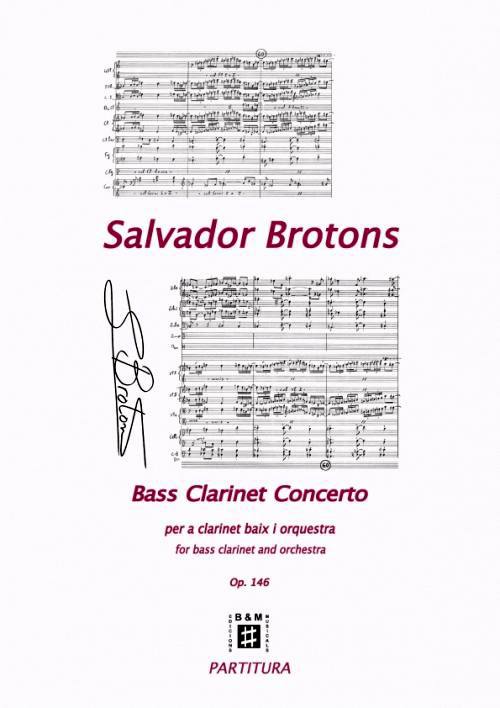Description
Author
Format
Instrumentation
Plantilla
Duration
Pages
Year of composition
ISMN
Ref.
I – Fantasia
II – Cantilena
III – Dionisiaca
When David Gould, a fabulous New York clarinet player, approaches me to commission to compose a new piece for bass clarinet and piano I was very happy. I have written a pretty good number of Sonatas or pieces for instrument and piano but I do not know why, I did not compose anything for bass clarinet and piano.
The bass clarinet being such an expressive instrument, with a great tessitura, technical possibilities and immense dynamic range it is surprising that still lacks of a very substantial concert literature. Thus, I have written this Sonata – Concerto for bass clarinet and piano or orchestra with great enthusiasm.
As I have already done with other solo instruments, the fact that the piece can be serve either as a Sonata or as a Concerto is planned from the very beginning. I have tried to compose an idiomatically written piece for the piano as well as to be easily successfully orchestrated.
The first movement was premiered as a separate piece Fantasia at the International Clarinet Association Conference held in Ostende (Belgium July 2018). The last two movements were written later during the September month of the same year.
This is pure music with any particular program. No experiments in bizarre music effects that we are so tired to hear in contemporary music. Just a piece to enjoy singing, to have fun playing and listening displaying the expressive qualities of the bass clarinet along with an active piano/orchestra part.
The Fantasia is written following a modified Sonata form free of tonal connotations. The first idea starts directly with a rhythmic decisive theme. Some virtuosistic passage work material follows as a transition to a more relaxed second idea presented by the bass clarinet and repeated by the piano under some accompanying designs by the clarinet. A Development section continuous through fragmentation and manipulation of the presented material reaching a more exciting rhythmic climax. A shortened and modified Recapitulation follows leading to a Cadenza by the soloist. A short Coda ends the piece based mainly on the rhythmic pattern presented at the end of the development section combined with the head of the first idea.
The Cantilena is an expressive short lyrical movement in an A-B-A form. The soloist introduces the main theme directly on a harmonious delicate accompaniment. The B part is just a transitional passage to bring back the melodic theme now in the piano/orchestra while the bass clarinet embellished with new countermelodies.
The Dionisiaca as its title suggests, is a fast movement full of irregular meters and rhythmic patterns. Very unstable and demoniac has two main themes: the first is virtuosistic and the second somewhat more singable. There is no development section but rather a modified recapitulation with several changes and different added transitions. A Coda based on previous material ends the piece brilliantly.
The three movements of this Sonata – Concerto can also be played successfully as individual pieces.
















There are no reviews yet.